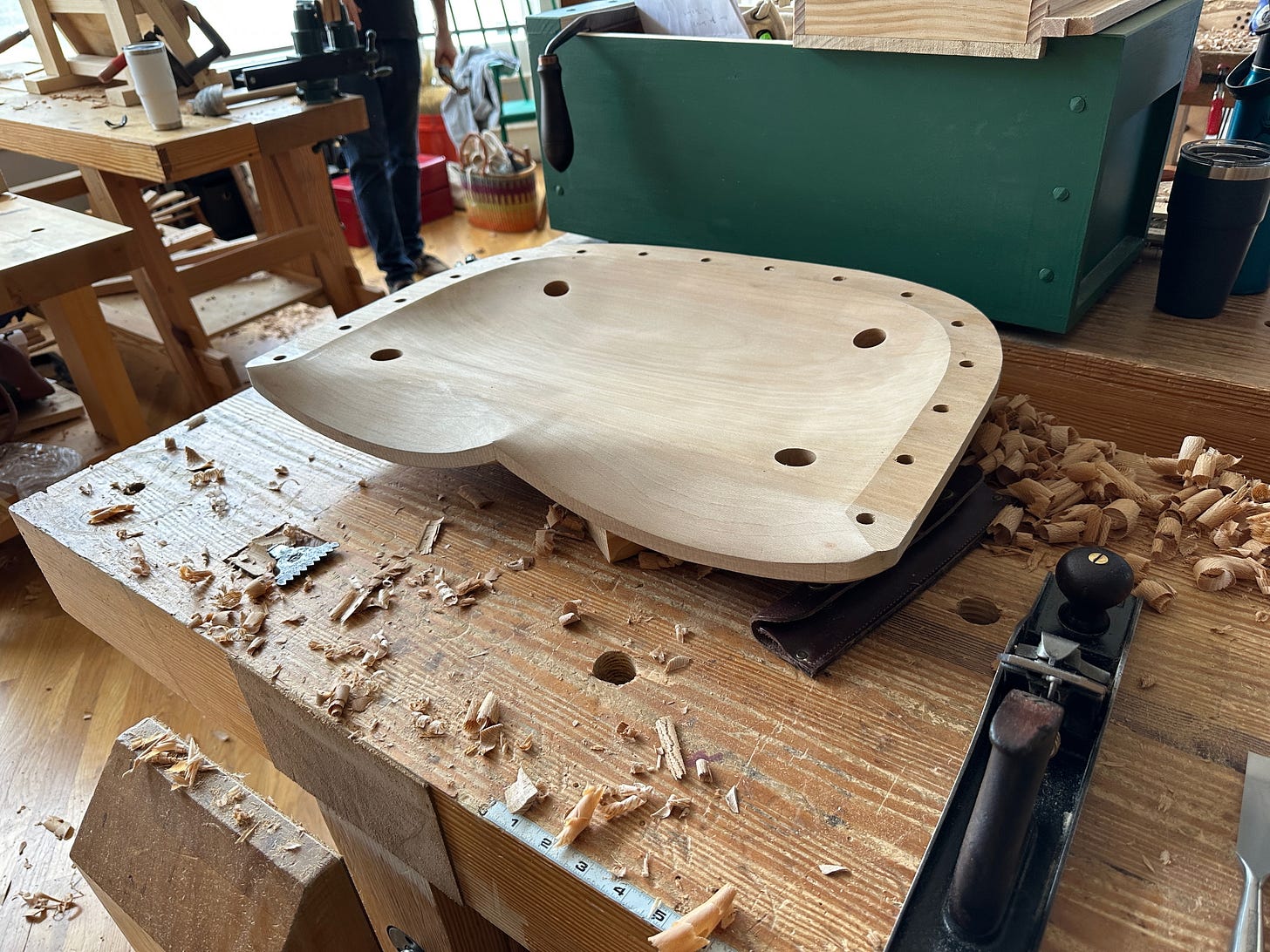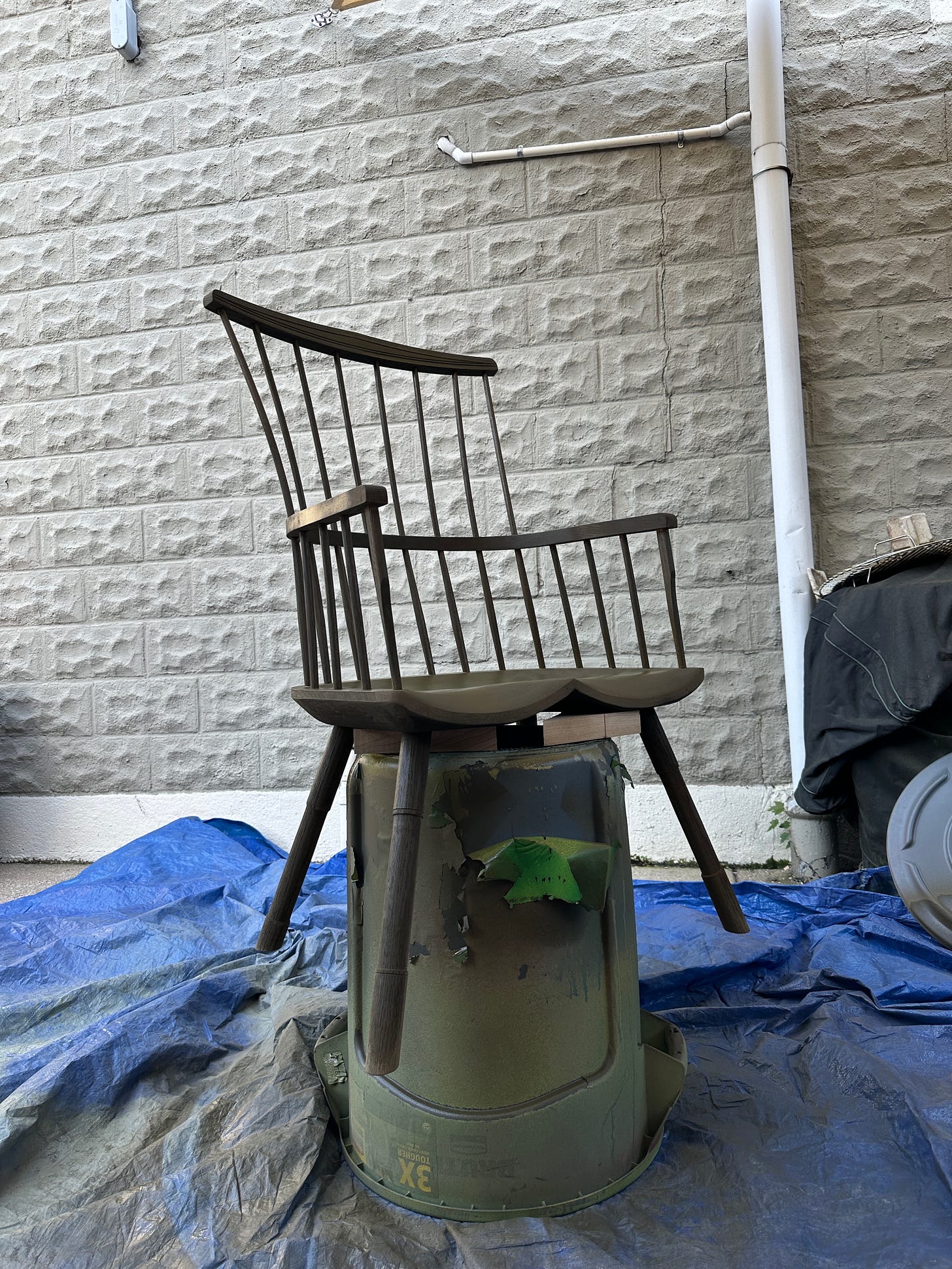Note: This week we feature two shorter reviews (instead of padding one review with lots of “very, very, verys.”) On Friday, I’m off to Germany and then the U.K. for teaching and research, so likely you will be reading reviews from Megan and Kale during July.
Jason Lonon Chairmaker’s Adze
I don’t use an adze much in my chairmaking. Because I create a shallow saddle on my seats, an adze is overkill (I typically start with a scorp/inshave and finish with a travisher). But because I started making these early Lincolnshire Windsor chairs, I need to hog out a ton of wood (the bowl is 1-1/2" deep).
Of course, my timing here was horrible.
Last year, I gave my Matty Sears adze to a friend as a gift. My friend uses an adze all the time in his work, and I felt bad seeing Matty’s excellent adze unused. So without a good adze sitting around, I ordered a Shaper Origin. (Just kidding.)
I ordered a Jason Lonon Chairmaker’s Adze. Jason makes great tools – we’ve been using his scorp here for some time. So I knew what I was getting when I ordered the adze: great steel, a properly formed bevel and a comfortable handle.
The adze was perfect for this job. With the chair seat propped up on a shop-made platform, it look less than 40 minutes for me to hog out almost all the material for the seat. The adze is lightweight, aggressive and easy to control.
Several other woodworkers also used my Lonon adze on their seats. After about four seats, the adze’s edge needed only a touch-up with stones to get back to perfection. That’s good steel.
Lonon’s tools have a real handmade character to them. They are not chunky or crude. They’re quite the opposite. But you can tell this tool was made by a skilled person.
One tip: Be sure to make or purchase a leather sheath to protect the tool’s edge.
Like all blacksmith-made tools, this adze is expensive. But compared to the mass-manufactured ones I’ve used, the price is totally worth the money.
P.S. If you want to learn more about this chair, start here.
Elmer’s Wood Glue Max
We are trying to phase out plastic-based glues in our workshop. But I doubt we ever will be able to completely stop using polyvinyl acetate (PVA) glues. These yellow glues are so strong, easy to use and consistent that they come in handy in a pinch.
Since I started woodworking, the only PVA I have much experience with is Titebond (specifically Titebond I). It’s available everywhere. In fact, it can be difficult to find anything else on the shelves around here (the glue’s parent company is about 90 miles from here).
Several readers have been crowing about Elmer’s Wood Glue Max, a PVA that has some special properties. I tried to buy some locally, but none of our suppliers carry it. So I bought some online, which is weird – like buying bottles of drinking water online.
The Elmer’s Wood Glue Max is a Type I PVA, which means it’s not for outdoor use. Some of the bottles (including mine) crow that the glue is “waterproof.” That must be a mistake or a misdirection. Type I glues (like Titebond I) are no good outside.
So don’t use it outside.
So what’s special about the glue? It’s surprisingly good at filling gaps in your joinery.
Keep reading with a 7-day free trial
Subscribe to Never Sponsored to keep reading this post and get 7 days of free access to the full post archives.






